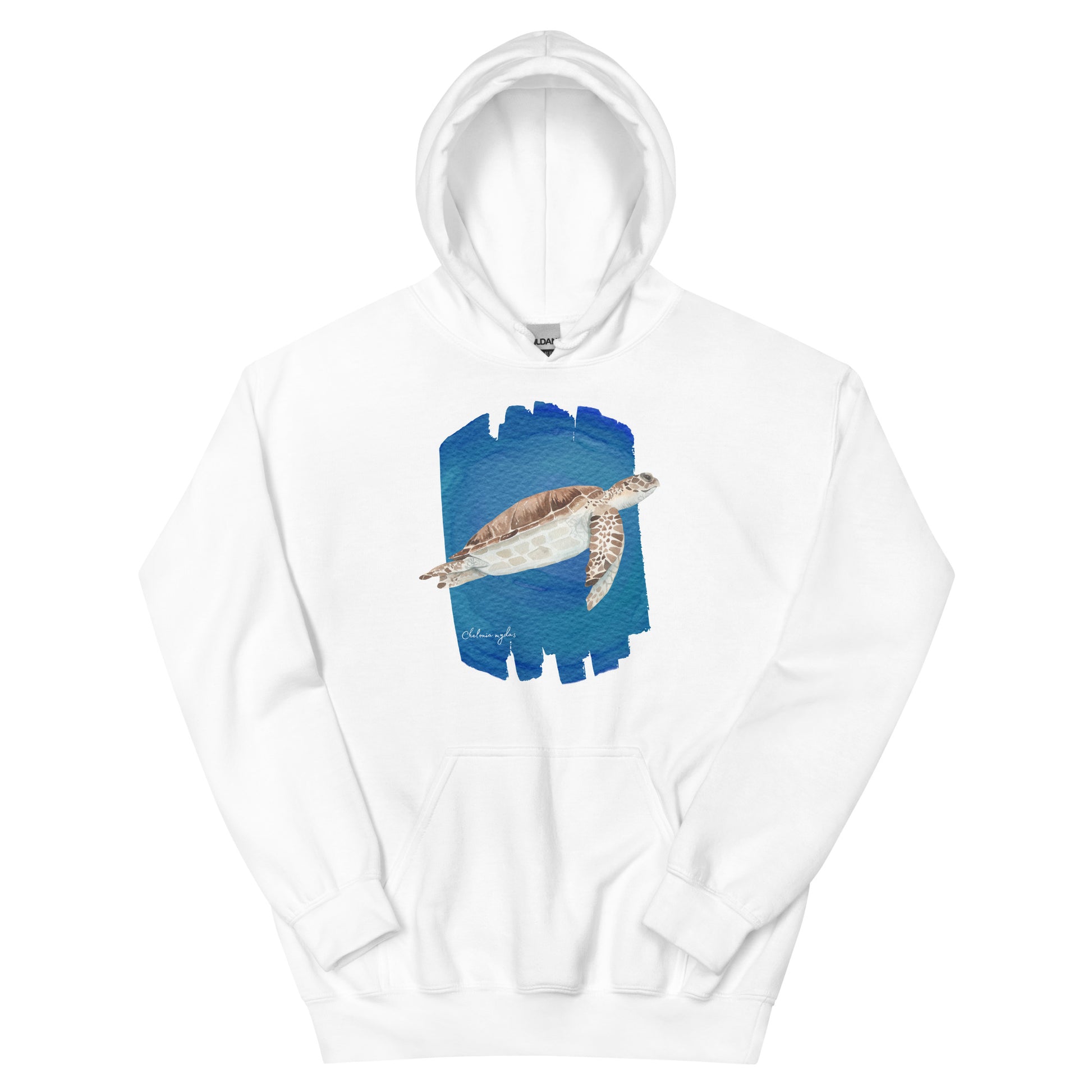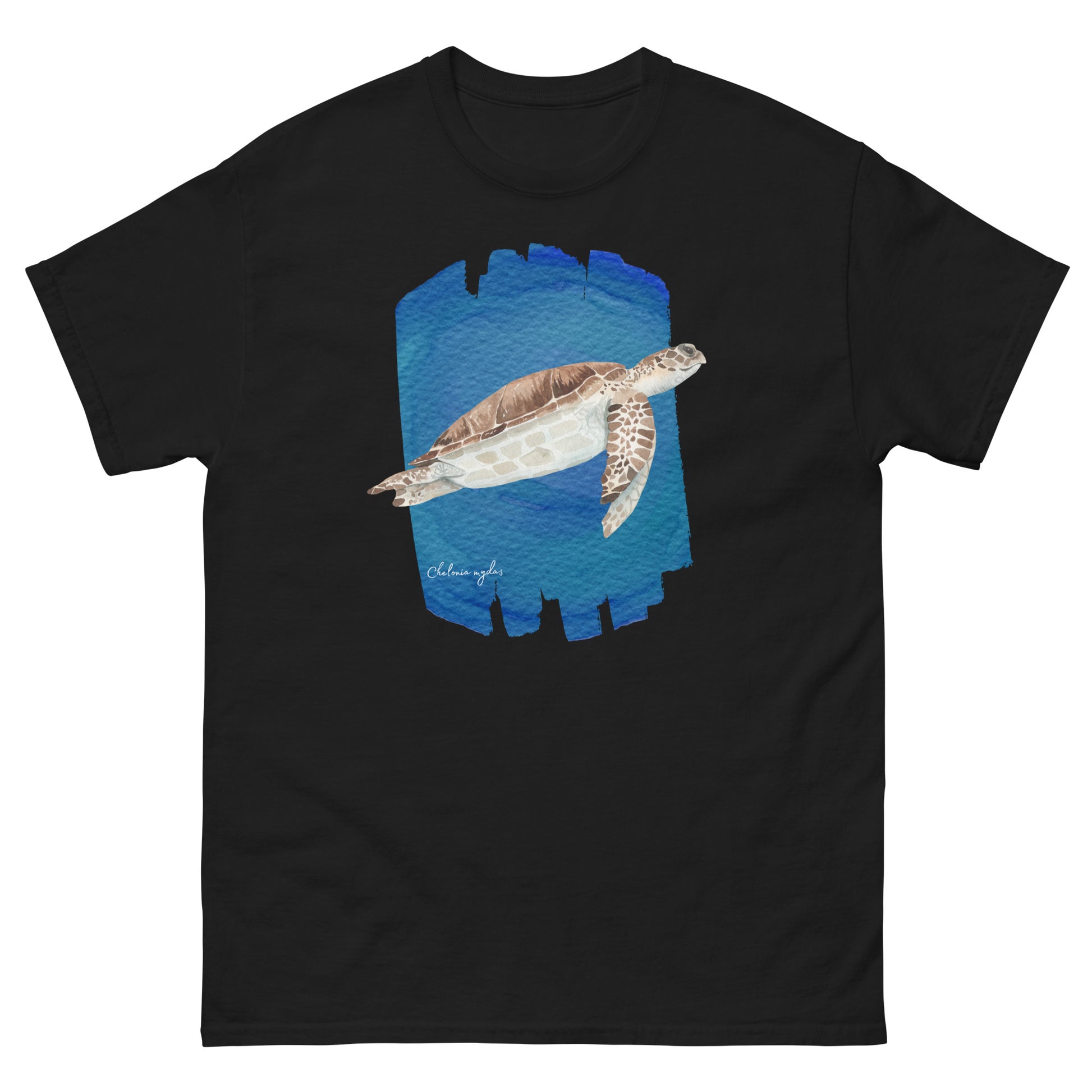The hawksbill turtle (Eretmochelys imbricata) is a small turtle compared to other sea turtles such as the leatherback or green turtle, reaching a maximum length of 90 centimeters and weighing 80 kilos. It's undoubtedly one of our favorites.
To distinguish the hawksbill from other sea turtles, it is enough to look at its head, which is elongated and ends in a beak-shaped mouth that is used to reach the crevices of coral reefs and feed on sponges, its main food source, and invertebrates. The carapace of adult specimens is dark brown with orange, red and/or white stripes, and the scales are overlapping. The ventral area (called the plastron) is pale yellow. Juveniles are usually black with yellow carapace edges.
Another characteristic that distinguishes hawksbills is that they are the only sea turtles to have two pairs of prefrontal scales on the top of their heads, and each flipper usually has two claws.
T-shirts and Hoodies for Turtle Lovers
SEE MORE TURTLE T-SHIRTS AND HOODIES
Female hawksbill turtles return to the beaches where they were born every 2 to 3 years to nest. They usually nest high on the beach, in dunes or under vegetation, and have a preference for beaches with little sand. Hawksbill turtles lay their eggs at night approximately every 14-16 days during the nesting season. The nesting season varies from area to area, but most nesting occurs between April and November. A hawksbill will lay 3 to 5 nests per season, containing an average of 130 eggs, which hatch after 2 months.
Habitat

There are two subspecies of hawksbill turtles, Eretmochelys imbricata imbricata, found in the Atlantic Ocean, and Eretmochelys imbricata bissa, found in the Indo-Pacific region. Hawksbill turtles use different habitats at different stages of their life cycle, but are associated with coral reefs, especially as adults. Hawksbills are widely distributed throughout the Caribbean Sea and western Atlantic Ocean, from southern Florida to the Gulf of Mexico, in the Greater and Lesser Antilles, and throughout the Central American continent south to Brazil.
Adult hawksbills are capable of migrating long distances between nesting beaches and feeding areas, migrations comparable to those of green and loggerhead turtles, and can travel around 2,000 km.
Juveniles live offshore, seeking refuge in floating kelp beds and drift nets in the Atlantic Ocean, but little is known about the habits of the Pacific subspecies at this stage. After a few years in the pelagic zone, when they reach 20-25 cm in length for the Atlantic subspecies and about 38 cm for the Pacific subspecies, they move on to occupy coral reefs.
 The hawksbill turtle uses its beak to feed on coral reef sponges. Image by Raymond™
The hawksbill turtle uses its beak to feed on coral reef sponges. Image by Raymond™
This change in habitat also implies a change in feeding strategies, from mainly surface feeding to foraging on coral reefs. At this stage, juveniles begin to feed on a varied diet ranging from harmless sponges to poisonous sponges and even the dangerous Portuguese man'o war.
When they reach coral reefs, they occupy the ledges and caves of the reefs, providing shelter both during the day and at night, as they are one of the few turtles that inhabit the same areas for long periods of time. Hawksbills have also been found in mangroves around bays and estuaries, especially along the east coasts of continents where coral reefs are absent.
Hawksbill Turtle Threats
Hawksbill turtles face threats both on nesting beaches and in the marine environment. The primary threat to hawksbill turtles is the degradation of their coral reef habitat. Climate change is adversely affecting coral reefs by increasing the incidence of coral diseases, which can ultimately wipe out an entire coral reef. Hawksbill turtles depend on coral reefs for food and habitat, their home. In addition to the disappearance of coral reefs, the harvesting of their eggs, hunting for the sale of their meat, and accidental capture are other threats to hawksbill turtles, which are currently critically endangered.























